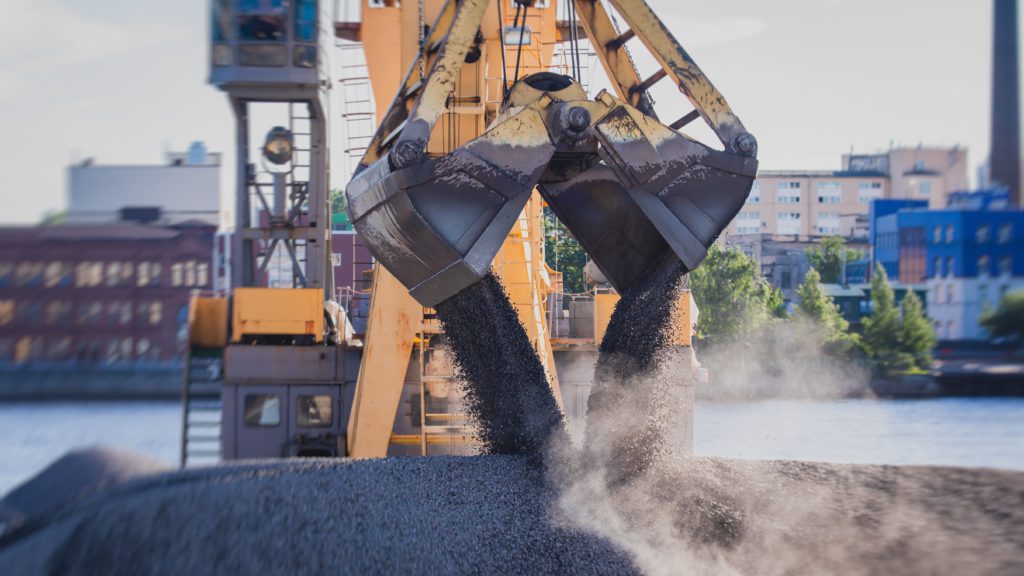
(The opinions expressed here are those of the author, Clyde Russell, a columnist for Reuters.)
China’s imports of major commodities were mixed in August, with ongoing weakness in crude oil and natural gas but strength in coal and copper.
However, where recovery was evident, probably temporary factors were driving it, rather than any underlying resurgence in demand. The world’s second-largest economy continues to struggle with the effects of its strict covid-19 lockdowns and an embattled property sector.
The standout performer was coal, with customs data on Wednesday showing imports of 29.46 million tonnes in August, up 25.3% from the prior month and 5.03% from a year earlier.
The August figure was the highest this year, although imports for the first eight months of 2022 were still down 14.9% from the same period last year, reflecting a weak first half.
The driver for higher coal imports was China’s heatwave and drought, the former driving up power demand for air-conditioning and the latter restricting hydropower generation, with coal-fired power having to make up the shortfall.
It’s also interesting to note that the rise in coal imports appears not to have come from the seaborne market, with both Refinitiv and commodity analysts Kpler showing relatively stable arrivals at ports in August from July.
Refinitiv estimated August seaborne coal imports at 23.27 million tonnes, in line with July’s 23.22 million, although it’s worth noting that the past two months were the strongest for seaborne imports since August 2021.
Kpler estimated August seaborne arrivals at 22.69 million tonnes, down a touch from July’s 23.95 million.
The steady picture for seaborne arrivals implies that China’s overland imports from neighboring Mongolia and Russia have likely picked up in recent weeks.
Mongolia supplies mainly coking coal, used to make steel. Given that China has yet to resume importing coking coal from Australia, the world’s largest shipper of that grade, it’s not surprising China has been buying more from its northern neighbor.
One reason for China turning more to Russian coal is that it has become available at a steep discount, as European and Japanese buyers have shunned cargoes in the wake of Moscow’s invasion of Ukraine.
Russia has the capacity to export at least 1 million tonnes a month via rail crossings to China and is working to boost that limit, but the expansion is likely to take several years to come into operation.
China’s seaborne imports from Russia have surged this year as well, with Kpler data showing arrivals of 5.25 million tonnes in August. That was down from July’s 6.57 million tonnes but up from an average of less than 3 million a month in the first quarter of 2022.
China’s other major supplier of coal is Indonesia, with Kpler estimating August imports at 15.76 million tonnes, up from 14.12 million in July.
Indonesian thermal coal sells at a steep discount to Australian coal, even when differences in energy content are considered.
The other commodity showing strength in August was copper, with imports of the unwrought metal rising to 498,188 tonnes, up 8.7% from July and 28.2% from August last year, although that was a three-year low.
But the rise in copper imports isn’t necessarily a sign of strength in demand for the industrial metal, although there has been something of a mild recovery in manufacturing since lockdowns in several major cities slowed activity in the second quarter.
Rather, it’s more likely traders are taking advantage of the open arbitrage opportunity to London-traded copper, buying cheaper metal on the international market.
China’s inventories of copper have also been falling, with Shanghai Futures Exchange stocks hitting the lowest since January in the week to Aug. 19, when they stood at 31,205 tonnes.
Higher imports helped push them to 37,477 tonnes for the week to Sept. 2, but this is still only slightly more than half the 69,278 tonnes for the same week in 2021.
Outside of coal and copper, the picture for China’s commodity imports was softer, with crude oil arrivals at 9.5 million barrels per day (bpd), which was down 9.4% from the same month last year, although up from July’s 8.79 million bpd.
However, refined product exports also rose in August, hitting 4.78 million tonnes, which equated to about 1.23 million bpd, up from July’s 880,000 bpd.
Imports of natural gas, both from pipelines and as liquefied natural gas (LNG) were 8.85 million tonnes in August, down 15.2% from the same month last year. For the first eight months of 2022, natural gas imports are down 10.2%.
Iron ore imports were 96.21 million tonnes in August, up from July’s 91.24 million, but 1.3% below the 97.49 million of August last year.
Imports of the steel raw material are down 3.1% over the first eight months of the year, showing that China has yet to meaningfully accelerate infrastructure construction, or restore confidence to the residential building sector, where several property developers are struggling with overstretched balance sheets.
(Editing by Bradley Perrett)
Comments